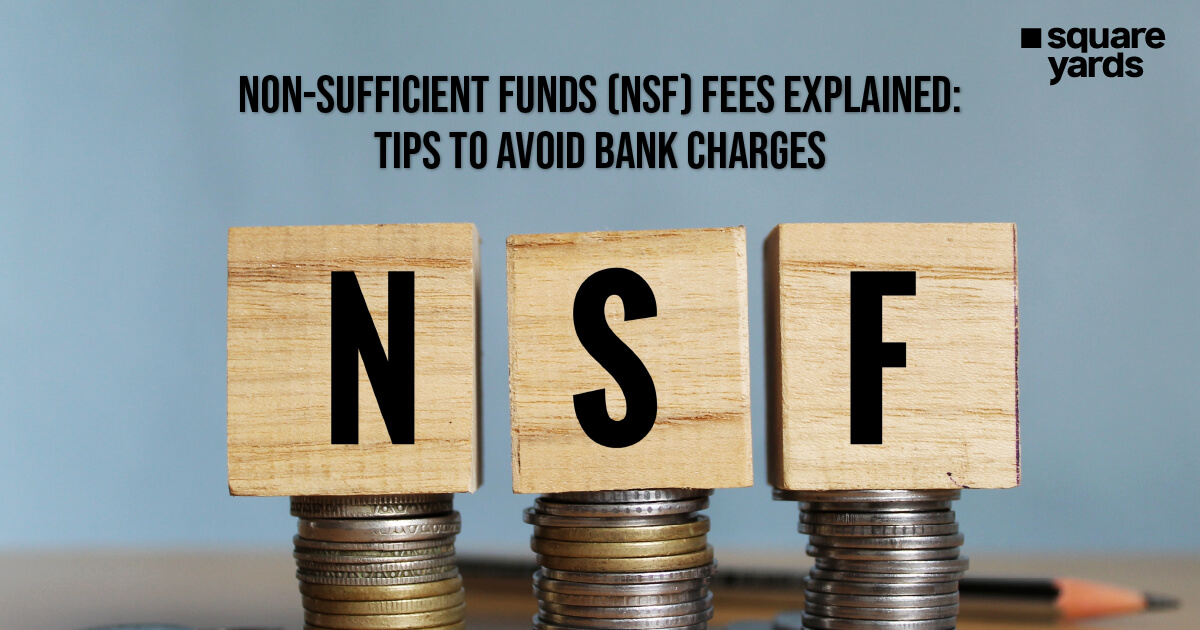Our dreams tend to take shape as we grow older in our lives. Right from pretending to have a home to actually planning to buy one, we all know the journey. But along the way, we also get to know about the challenges that we may face while saving for the new home. From recession and lifestyle expenses to taxes, our savings keep depleting. Luckily, the Canadian government has come up with a scheme aimed to ease the homemaking process. Presenting FHSA in Canada, or First Home Savings Account. A new way to save tax on your home investments. We have mentioned it all! Everything you need to know: eligibility, account creation, withdrawal, and more. By the end, you will also know about a cool trick to speed up your way towards a home purchase.
Know About FHSA in Canada
An FHSA in Canada, or First Home Savings Account, is a specialised savings plan in Canada aimed at helping first-time homebuyers. It’s a registered tax free savings account designed for saving money so that you can buy your first home without any hassle. These instalments are tax-deductible, resulting in lowering your current-year income tax. Any investment gains or income within the account are also tax-free. This makes it easy for first-time home buyers in Canada to manage their finances and have a sustainable life. Under this scheme, you can contribute up to $8,000 in one year, amassing a total of $40,000 over time. This way you can collect funds for a down payment. However, withdrawals must be used only for a first-time home purchase only.
Why Should I Open a FHSA in Canada?

Opening a tax free first home savings account in Canada comes with several benefits. It’s tailored to help first-time homebuyers achieve their homeownership aspirations. One of the key advantages is the tax-related benefits! Your contribution to an FHSA will be tax-deductible. This can lead to a visible cut down in taxable income, potentially resulting in lower tax payments. Any growth or investment income earned within the FHSA is tax-free, improving your bank balance and savings for your new home.
The FHSA focused on savings, dedicated solely to accumulating funds for a down payment on your first home. With an annual contribution limit of $8,000 and a lifetime limit of $40,000, the FHSA speeds up the process of property purchase. Depending on the chosen FHSA type, you can split your investments.
Eligibility Criteria to Open a FHSA
To be eligible for a tax free first home savings account in Canada, you need to fit a specific criteria. These rules are there to ensure the account seeker’s authenticity. Here are the key eligibility criteria you need to see:
-
- The account holder must be at least 18 years old. This age requirement ensures legal involvement in financial contracts.
- The account holders must be Canadian residents. The scheme is only for the people who are paying Canada tax and this guideline ensures that.
- The Canadian government ensures that there would be no loophole in the agreement. Here, even your partner should be a first-timer.
- He/she must not have owned a qualifying home that was used as a principal place of residence at any time in the current calendar year or the four calendar years preceding the year in which you intend to open the tax free savings account.
- Like the minimum age, the policy also comes with a maximum age limit. The account holder cannot be any more than 71 years of age at the time of application.
Note – Each section of the country has specific guidelines for legal ages. This could impact the eligibility criteria to open a FHSA in Canada. Also, if the account holder becomes a non-resident of Canada after opening a FHSA, you need to connect with the concerned person to know about future procedures.
Types of FHSA in Canada You Should Know
Based on your financial preference and risk tolerance, you can choose from the below-mentioned type of FHSA in Canada. Each type offers different investment options and perks. Keep your end goal in your head while comparing the types, which is to buy your first home in Canada.
-
Depositary FHSA

This type of First Home Savings Account is offered by financial institutions such as banks, credit unions, and trust companies. It holds money, term deposits, or guaranteed investment certificates (GICs) as a guarantee. The Depositary FHSAs provide a secure and straightforward way to save money for your first home. The potential for interest or returns earned on term deposits or GICs, makes it a great choice.
-
Insured FHSA
Insured FHSAs involve ‘annuity contracts’ with licensed annuity providers. An annuity contract is a financial product that offers you regular payments. It can offer a steady income over time. Insured FHSAs may be suitable for individuals looking for a structured income flow from their FHSA savings. Although, the characteristics of this type of FHSA may seem to have differences as compared to other types of FHSAs.
-
Trusted FHSA
Trusted FHSAs are managed by trust companies as trustees which can offer you more diverse investment options. In trusted FHSAs, qualified investments include money, term deposits, GICs, government and corporate bonds, mutual funds, and securities listed on designated stock exchanges. This FHSA type enables individuals to diversify their savings. This will eventually lead to higher returns by investing across various financial instruments.
Contribute & Withdraw Details of FHSA?
A First Home Savings Account (FHSA) allows you to contribute a maximum of $8,000 per year and a lifetime total of up to $40,000. Withdrawals from the FHSA Canada are tax-free and intended for purchasing a first home. To qualify for non-taxable withdrawals, certain conditions must be met.
Things that Makes Your FHSA Withdrawal Qualified
A qualifying withdrawal from a tax free first home savings account in Canada is non-taxable as per the rules. To qualify for a non-taxable withdrawal:
-
- You must make the withdrawal using a designated form that outlines the location of the home you intend to occupy as your primary residence within a year of acquiring it.
- Throughout the period from the withdrawal until obtaining the home (or until your death, if earlier), you need to be a Canadian resident, and you must also qualify as a first-time home buyer.
- Prior to making the withdrawal, you must enter into a written agreement to either purchase or construct a qualifying home. This agreement should be in place before October 1 of the year following the withdrawal.
- The home you intend to buy or build should not have been acquired more than 30 days before making the withdrawal.
What Happens If I Decide Not to Buy the Home?

If you have an approved tax free first home savings account yet do not end up purchasing a home, you have to face the guidelines made by the Canadian government. While FHSA grants are tax-deductible and withdrawals for a qualifying home purchase are tax-free, using the funds for non-qualifying purposes could have tax consequences. If you decide not to buy a home, you could face penalties and taxation on the withdrawn funds. To maximise the benefits of your FHSA, you might explore alternatives such as transferring the funds to other registered accounts like an RRSP (Registered Retirement Savings Plan) or TFSA (Tax-Free Savings Account). Be sure of any time limits or restrictions associated with your FHSA.
Is it Possible to Transfer Funds From RRSP to FHSA?
Yes, you can transfer funds from your Registered Retirement Savings Plan (RRSP) to a First Home Savings Account (FHSA). This transfer can be a tax-free process, and it allows you to use the funds saved in your RRSP. However, it’s important to ensure that the amount you transfer from your RRSP to your FHSA is within the limits and guidelines set by the government for both accounts.
Difference Between FHSA and Existing RRSP for Home Buyers’ Plan
The main difference between a First Home Savings Account (FHSA) and the existing RRSP Home Buyer’s Plan (HBP) lies in their purpose, eligibility criteria, and features:
-
Purpose and Eligibility
The RRSP and FHSA Canada serve distinct purposes for assisting individuals in purchasing their first homes. The FHSA is a specialised savings account aimed at helping first-time homebuyers accumulate funds specifically for their initial home purchase. To be eligible for an FHSA, you need to meet certain criteria, including being a Canadian resident, at least 18 years old, and a first-time homebuyer. On the other hand, the HBP allows individuals to withdraw up to $35,000 from their Registered Retirement Savings Plan (RRSP) for the purpose of buying or building a first home. Similar to the FHSA, eligibility for the HBP includes being a Canadian resident and a first-time homebuyer.
-
Contribution and Withdrawal
When it comes to in and out of money, there are differences between the two options. With the FHSA Canada, contributions are made using after-tax income. These payments are tax-deductible, potentially lowering your taxable income for the current year. Withdrawals from an FHSA for a qualifying home purchase are tax-free. On the other hand, the HBP involves contributions to an RRSP using pre-tax income, offering an immediate tax deduction. Withdrawals under the HBP do not have immediate tax consequences as long as they are repaid to the RRSP over a specified period.
-
Limits
The FHSA and HBP also have different limits for submission and withdrawals. The FHSA has an annual contribution limit of $8,000 as well as a lifetime limit of $40,000. In contrast, the HBP allows a maximum withdrawal of $35,000 from an RRSP for a first home purchase.
-
Repayment
Repayment requirements also distinguish the two options. For First Home Savings Account withdrawals, there is no obligation to repay the withdrawn amount, regardless of the purpose. The withdrawn amount remains tax-free. However, under the HBP, the withdrawn funds must be repaid to the RRSP over a period not exceeding 15 years. Failure to adhere to the repayment schedule can result in the withdrawn amount being added to taxable income.
-
Investment Options
Regarding investment options, the First Home Savings Account provides a range of choices within its different types: depositary, trusted, and insured FHSAs. These options allow individuals to invest in various financial instruments. In contrast, the HBP utilises RRSPs, which also offer a diverse array of investment options. Funds withdrawn under the HBP can be invested according to the individual’s chosen RRSP investments.
Can I Use FHSA and the Home Buyers’ Plan Together?
Yes, you can use both: the First Home Savings Account (FHSA) and the Home Buyers’ Plan (HBP) simultaneously to purchase your first home in Canada. The FHSA Canada allows you to save money in a tax-free account specifically for your first home, while the HBP enables you to withdraw funds from your Registered Retirement Savings Plan (RRSP) for the same. By using both options simultaneously, you can acquire a larger pool of funds for your home purchase. For instance, with the FHSA, you can contribute up to $8,000 annually and a maximum of $40,000 in total. With this amount, you can withdraw up to $35,000 from your RRSP. The combined amount can make it easy for you to cover your expenses in no time.
You May Also Read :
|
Canada Escrow Account |
|
|
How To Block Debit or Credit Card |
|
|
All About TFSA vs RRSP |
|
|
Guide To Co-Signing a Mortgage |
Frequently Asked Questions (FAQs)
Yes, FHSA (First Home Savings Account) accounts are available in Canada.
FHSA accounts are offered by several financial institutions including Royal Bank of Canada, QuestTrade, Fidelity Investments, National Bank of Canada, Equitable Bank and Scotiabank.
The lifetime limit for contributions to the First Home Savings Account (FHSA) in Canada is CAD 40,000, and the annual contribution limit is CAD 8,000.
There's no specific minimum holding period for Tax Free Home Savings Account contributions to be eligible for deduction and withdrawal in Canada. Are FHSA accounts available in Canada?
Which bank has FHSA in Canada?
What is FHSA in Canada?
What is the new tax-free savings Canada?
What is the FHSA limit in Canada?
What is the minimum holding period for FHSA in Canada?











